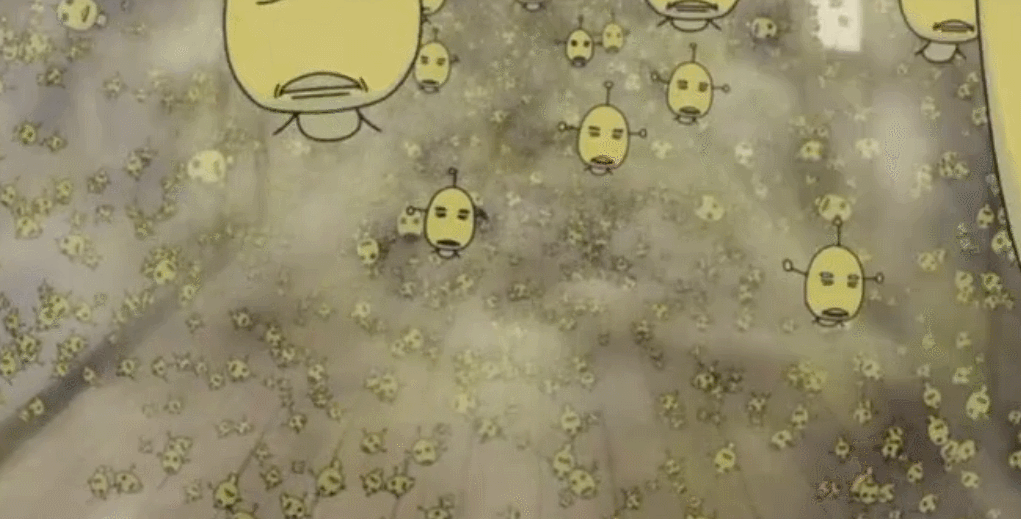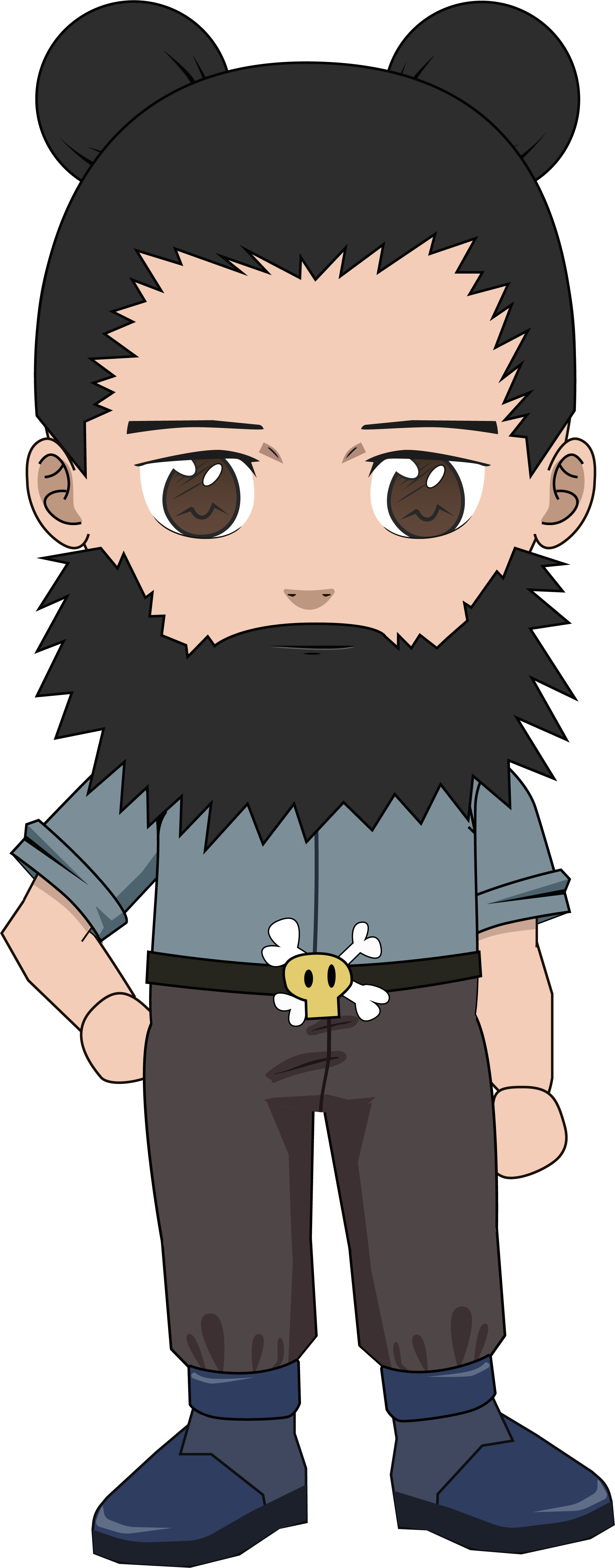Находясь на сайте, вы даете согласие на обработку файлов cookie. Это необходимо для более стабильной работы сайта
Hello! today we are wrapping it up. I want to briefly review each of our anime and reconsider how thinking with Anime is instructive for considering contemporary and predicted ecological and technological troubles
Share the longread


This movie is about exile and ecological displacement
Ashitaka, the main character, get cursed by a boargod who has been shot by an iron ball. The boy forced to leave his village to get rid of the curse. He meets many new people along the way. As it turnes out, the curse plays an important part in his life.
on his way ashitaka meets the wolves, including san — princess mononoke. san is a human who has been adopted by the wolves. of course, ashitaka falls in love with wolf princess.
finally ashitaka comes to Iron Town and after a series of events he finds out that the ruler, Eboshi, who's destroying nature, isn't evil. She was trying to help her people.

so the story of eboshi teachs us that we should think globally: even if you want to save your people, you risk doing great harm to those you don't even know.
along with us eboshi learns that we can't do good only for our loved ones. she realises how our good can harm others. so she asks at the end: "can the people and the forest live in peace?" the answer to eboshi's question is summarised in the final line, when san tells ashitaka: "i love you, ashitaka. but i'll never forgive the human race"

"mononoke hime" teaches us that our world in fact is a system of relations. including ecology!
"mononoke hime" teaches us that our world in fact is a system of relations. including ecology!


mononoke hime: san says goodbye to ashitaka
ecology has two aspects: it is a biological science of relations amongst organisms and the environment around them. also ecology is a political movement aimed to decrease the damage caused by people. thus we learn about ecological thought as the idea that brings together political ecology and biological ecology. by the way, we have link to brilliant paper that describs connection between princess mononoke and political ecology
ecological thought disrupts duplexes, because it is the sistem of relations. for example, when you die, your body can become soil for other things to grow.
Tilda Publishing


The Plot
The plot shows the world In ruins after ecological destruction, and it doesn't make any sense! there is something real about that for me.

speaking of the plot, we can highlight 5 main points in this movie:
 World - undergone climate changes, partly flooded, gradually taken by jungles, where people try to survive. carbon markets as the main political and economic tool
World - undergone climate changes, partly flooded, gradually taken by jungles, where people try to survive. carbon markets as the main political and economic tool Doumo - a home of Kuniko, a criminal with good intentions. it is protected by the Sea Wall and influenced by «Metal Age»
Doumo - a home of Kuniko, a criminal with good intentions. it is protected by the Sea Wall and influenced by «Metal Age» Аtlas - a technological project that gave people a new home. it is ruled by cruel Ryoko
Аtlas - a technological project that gave people a new home. it is ruled by cruel Ryoko Karin - a genius hacker that breaks carbon marketplaces. she uses an emotional artificial intelligence
Karin - a genius hacker that breaks carbon marketplaces. she uses an emotional artificial intelligence Akihabara - a free zone of entertainment and possibilities
Akihabara - a free zone of entertainment and possibilities
as we see, the world of "shangri-la" has dramatically changed due to technologies. but maybe they supposed to give a salvation as well?

"shangri-la": the city
we need technologies for creating home, improving people's physical abilities as bodily extensions, providing the equipment, protecting and creating infrastructure. technology is neither good nor evil: it's a complex
more about technicity you can find in superinetersting paper "The Ontological Force of Technicity: Reading Cassirer and Simondon Diffractively" by Aud Sissel Hoel and Iris van der Tuin

returning to "mononoke hime", we remember that our world is the system of relations. so, Technology is kind of a relational enactment and technicity is being within it. Technology is not only a human tool, it has its own nature: they connecting, containing and communicating. Relational enactments of technology change, figure and create that which is related. The relation is not just between subjects, it shapes what is related. For example, fire has transformed human as species while technological relation with fire enabled people to transform the whole world
returning to "mononoke hime", we remember that our world is the system of relations. so, Technology is kind of a relational enactment and technicity is being within it. Technology is not only a human tool, it has its own nature: they connecting, containing and communicating. Relational enactments of technology change, figure and create that which is related. The relation is not just between subjects, it shapes what is related. For example, fire has transformed human as species while technological relation with fire enabled people to transform the whole world

organism and milieu and method of actor-network tracing
second week also gave us two important theories: A concept of organism and milieu is the idea that all organisms see, know and shape their environment based on senses: hearing, sight, smell, touch, taste, balance, physical presence, mental fantasy. Alltogether we can call it ecological awareness
actor-network tracing method is developed by sociologists Michel Callon, Bruno Latour and John Law. this method helps with tracing relationships in the geography, political power and economic influence.
Tilda Publishing


The plot
«Moyashimon» is an extraordinary serial based on the idea of a young man named Sawaki can see microorganisms with his naked eye and communicate with them. Sawaki and his best friend kei enter an agricultural university. Sawaki's family has an yeast-growing factory while Sei's family owns a sake brewery. Therefore, both characters' lives have always been close to fermenting yeasts.
at the university they meet An eccentric professor who studies bacteria, fungus and fermentation with his postgraduate Hasegawa. But the most important characters are fungus, microbes and bacteria, that populate the world and create multicellular organisms — oryzae, bacteria, green and black mold

microbes can serve people by participating in various technological processes: they can ferment food, and because of it we can eat cheese and pickles, drink alcohol and be cured by antibiotics. but also Microbes are crucial for making the planet habitable for multicellular organisms like us. we call it "microbial terraforming"

Gaia hypothesis
in 1965 NASA scientist James Lovelock recognized that microbes were making constituents of the atmosphere. in 1971, along with a microbiologist Lynn Margulis, he has extended this idea to a theory called "Gaia hypothesis". the concept is simple: the soil is inhabited with bacteria, fungus, insects, worms, nematodes, and tardigrades – altogether they ensure the soil's fertility. It allows us to grow food. Water is also filled with microorganisms that are essential for its circulation. The entire world of ecology: the ecology of the air, the water and the soil are made together with microbes. Together we brew the world into one living organism.
Symbiogenesis
another important term from chapter 3 is "Symbiogenesis". Symbiogenesis is an evolutionary theory, which argues that tiny unicellular organisms had to find shelter in one another to create a multicellular life.

remember this tree of live? right. it shows how everything is connected. A small point in the middle were tiny unicellular not even creatures. two of the branches are bacteria. The third branch — eukaryotes — is a multicellular life form, our neighborhood. Eukaryotes were produced by bacteria moving inside of each other and forming communities that became stable enough to become multicellular organisms
Tilda Publishing


TIME OF EVE
"Time of Eve" is an excellent anime about a cafe called "Time of Eve" and its visitors. The only rule of this cafe is "No discrimination between humans and robots".
It's hard to tell who is a human and who is an android there. However, outside the cafe, in this world there is discrimination between humans and robots
It's hard to tell who is a human and who is an android there. However, outside the cafe, in this world there is discrimination between humans and robots

Yokohama Kaidashi Kikou

"Yokohama Kaidashi Kikou" is a realistic science fiction about our post-apocalyptic future where nothing much really happens. In this world, it doesn't matter if you are a robot or a human. In the end, people are just trying to get by and appreciate the simple gifts of living. Turns out, it is still possible to enjoy each other's company even though you are living in the ruins of the civilization.
our world is full of robots. they are used In industrial manufactories, At home, In the service industry, In elder and hospice care, As vehicles and even In the police force. this fact gives rise to a plenty of new ethical questions: can robots love? Can they join a faith? do they have souls? If a human is killed by a robot, whose fault is this: the engineer's, the robot's or the victim's?

also there are some problems about interaction between robots and human. what is correlation between care and power — do we exploite them? from the other side, people can also be afraid of robots: what if we'll loose our jobs and will become useless?

the answer is — We are humans as long as we can wonder and love. On the other hand, people are predictable and often act automatically. But in the face of loneliness and accidental technological transformation of ecology we learn that the question doesn't matter so much. Robots and humans are both inhabitants of the same damaged planet
the answer is — We are humans as long as we can wonder and love. On the other hand, people are predictable and often act automatically. But in the face of loneliness and accidental technological transformation of ecology we learn that the question doesn't matter so much. Robots and humans are both inhabitants of the same damaged planet

Tilda Publishing


The plot
the plot of the anime resembles a classic detective story: Batou — a security professional, dog lover, philosopher — and Togusa — family man and more human — investigate a series of murders.
In order to catch a hacker responsible for the crimes they go offshore into a strange world of hackers and memory systems where witness a surrealistic parade of animatronic puppets or people in masks, gods, divinities, beliefs.
The parade helps in to find Kim and they get caught into a hacked loop, which is a philosophical core of the whole film. The characters there explore their hopes and fears of whether or not they're humans, how much humanity remains, is Kim just a bad recording on the loop.

They would be stuck there forever but for the guardian angel, which is Major Kusanagi from the first film. Her ghost appears and gives Batou the clue to break out of the loop. The puzzle is cracked and they return to the "real world" in order to save the children who have been held captive for their souls to be exploited to give more texture to sex-dolls
cyborgs — what are they?
Medical prosthetics, Robotic arms and servos, Extended cybernetic senses — these technologies have affected the visual and conceptual idea of cyborgs. we need them while creating EEG controllers, smartphones, Epidermal electronic systems. sometimes even a child can't be born without its help.
Cybernetics is a communication theory based on the ideas of command and control. You give a command, something happens, something changes. And then there's also feedback. Did the command work? Did you get the intended outcome? and you start to think about this system in terms of circuits. basic cybernetic process diagram was developed by Nobert Wiener. his colleague donna haraway in her "Cyborg manifesto" claims that we are already cyborgs, that we are influenced by social circuits and feedback loops
fortunately, we have two methods of tracing cybernetic relations in society and technologies:
 Actor-network method shows us that everything and everyone is both an actor and a network.
Actor-network method shows us that everything and everyone is both an actor and a network. Material semiotics teaches that every subject is both its material form and interpretation, information.
Material semiotics teaches that every subject is both its material form and interpretation, information.
If we expand it beyond the individual organism to the entire species, we'll see the organism as a system shaping the environment using a set of relations and manipulations. cybernetics is showing us an organism as an entire system
Tilda Publishing



dear friens, thank you for coming all this way with me. I was pleased to present this course to those who like me love anime, interested in our planet, in the relationship of people to themselves and to the world. you can always go back to this course and also go further, focusing on additional materials for this course. Good luck everyone!
dear friens, thank you for coming all this way with me. I was pleased to present this course to those who like me love anime, interested in our planet, in the relationship of people to themselves and to the world. you can always go back to this course and also go further, focusing on additional materials for this course. Good luck everyone!

JOIN THE COURSE CHAT!











